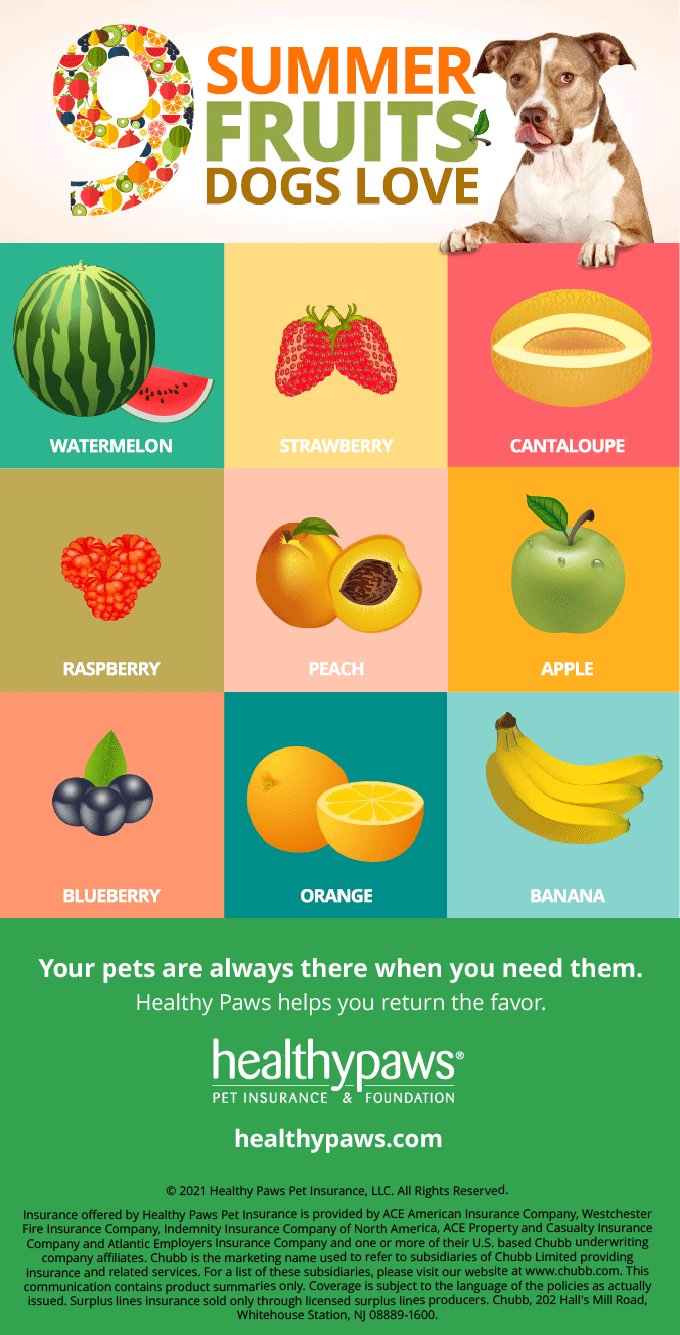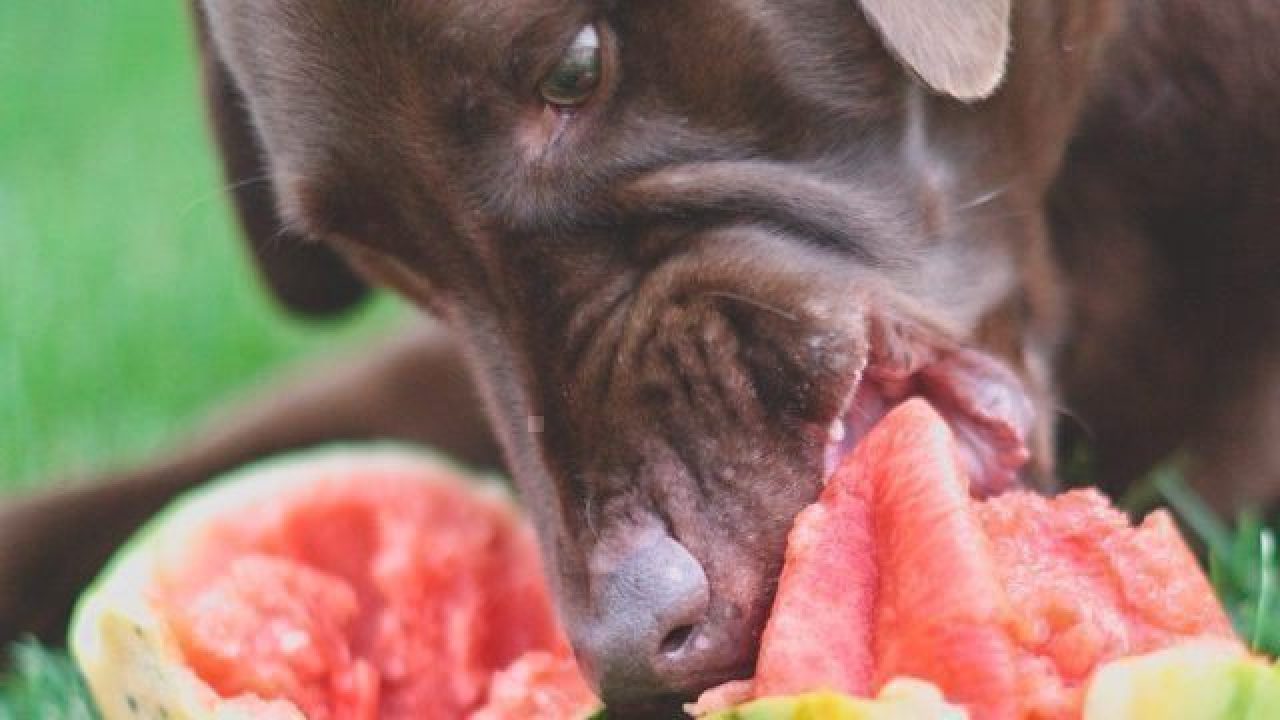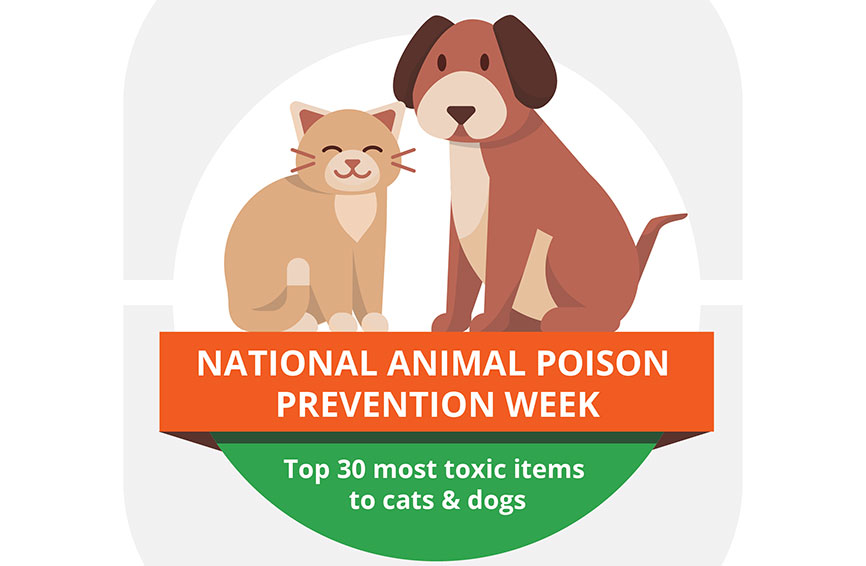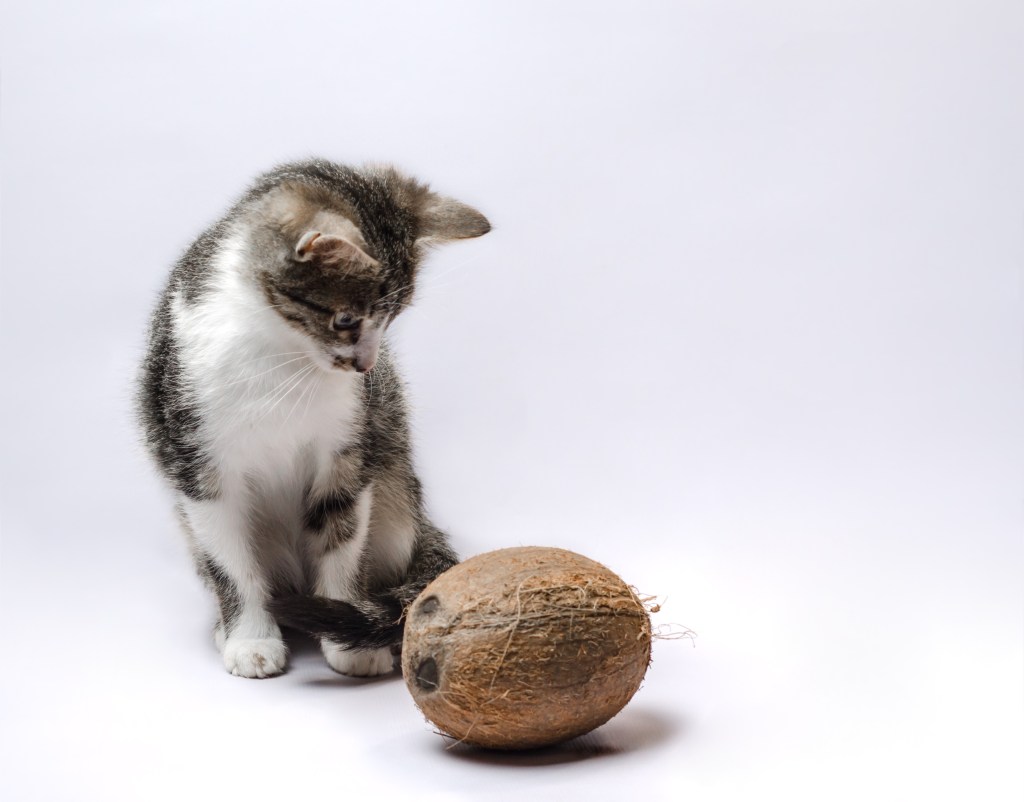Table of Contents
Key Takeaways
- Some summer fruits contain 70-90% water, which aids in hydration.
- Avoid giving dogs rhubarb leaves, fruit pits, persimmons, and avocado skin.
- Follow these serving suggestions for portion control and delicious recipes.
If you are wondering if dogs can eat fruit, yes they can, with some important notable exceptions. As most pet parents know, grapes, raisins, and currants are highly toxic to dogs and should be kept well out of reach.
Other fruits and fruit parts to avoid:
- Rhubarb leaves (stalks are OK) can cause mouth irritation, vomiting, and diarrhea.
- Persimmons can cause an upset stomach.
- Cherry pits, leaves, and stems contain cyanide, even though the flesh is not harmful.
- The pit, skin, and leaves of avocados contain the toxin persin.
- Pits of any kind of fruit – peaches, plums, and pear – may cause intestinal obstruction.
As with other human foods, other fruit is fine as an occasional snack but should be given in moderation to avoid upset tummies. Dogs don’t need fruit to survive, but most fruits will not harm them and may contain beneficial nutrients. Since fruits are high in sugar, it’s important to give them in limited quantities, especially if your dog is overweight.
Having said that, many of summer’s delicious fruits are packed with healthful antioxidants and nutrients that also can be tasty to pups trying to beat the heat. Plus, most fruits are 70 to 90 percent water, perfect for keeping pups hydrated in hot weather. Check out these nine summer fruits dogs love, complete with DIY dog treat recipes.

1. Can dogs eat watermelon?
Yes, dogs can eat watermelon. Be sure to remove the majority of seeds, which can cause intestinal discomfort or even blockage if too many are ingested. Since watermelon is made of 92 percent – you guessed it – water, the sweet fruit is great for keeping pets hydrated and preventing heatstroke. It’s also chock-full of vitamins A, B6, and C, which can boost your dog’s immune system, make your dog’s coat shinier and keep eyes and teeth in good shape.
There are only about 50 calories to a cup of watermelon, so it’s a healthier choice than cheese or hot dogs. As always, watch your dog for any reactions, and keep watermelon treats to a minimum. Even though watermelon is a low-fat, low-calorie option, it does have naturally occurring sugar.
Serving suggestion: Freeze cubed watermelon for a quick, frosty summer treat, or blend watermelon with honey and Greek yogurt for homemade “pupsicles.” Use a popsicle mold with a rawhide “stick,” or pour the slushy mixture into paw- or bone-shaped molds.
2. Can dogs eat strawberries?
Strawberries are perfect bite-sized treats for pups with a sweet tooth. Removing the leaves and stem is optional – dogs do eat grass, after all – and even wild strawberries are okay, too. Limit your dog’s strawberry intake to a handful; like with any food, too much of a good thing can cause gastrointestinal upset and diarrhea. Keep chocolate-covered strawberries out of paws’ reach – they can be deadly to dogs.
Serving suggestion: To cool down hot dogs on a summer day, make an ice lick. Spray a bowl or Tupperware container with non-stick spray, then fill with water; add your choice of berries or chopped fruit, then freeze. Place this ice lick in a shady spot outside for your pet to enjoy.
3. Can dogs eat cantaloupe?
Loaded with vitamin A, cantaloupe is a healthy fruit for dogs. Cantaloupe is a member of the melon family and, like watermelon, it’s a low-calorie hydrating fruit with lots of nutrients. Cantaloupes also contain vitamins B6 and C, as well as potassium, niacin, folate, and fiber.
The melon gets its orange color from beta carotene, which is known for improving eyesight. Senior dogs or those with glaucoma or cataracts can benefit from consuming cantaloupe as it may help prevent eye conditions.
For your dog, eating cantaloupe is safest in moderation. Consuming a lot at once can cause an upset tummy, vomiting, or diarrhea. As a general rule, limit your pup’s total treat intake (including fruit) to no more than 10% of his diet.
Serving suggestion: To serve cantaloupe, start by cutting off the rind. Though it isn’t toxic, the cantaloupe rind is very tough, presenting a risk of choking or intestinal obstruction. Next, cut the fruit into bite-sized pieces. The seeds are not toxic, though you may want to remove them because an excited dog could choke on them. Use a melon baller to scoop out bite-size bits of cantaloupe or chop the fruit into chunks – just make sure they’re small enough and not a choking hazard. You can also puree fresh cantaloupe and freeze it in a Kong toy or ice cube tray for a refreshing summer treat. Or, like with any fruit for dogs, blend with your pup’s favorite fruits, yogurt, and freeze for pupsicles.
4. Can dogs eat raspberries?
Raspberries are a little tart for some pets. This fruit is low in sugar – which is a plus, considering most pet parents don’t brush their dog’s teeth regularly – and provides pups with a little fiber. Raspberries also have anti-inflammatory properties, perfect for dogs with arthritis or bowel disease. However, raspberries should only be fed in small amounts. Raspberries naturally contain low levels of xylitol, which is dangerous for dogs in large doses.
Serving suggestion: Blend raspberries with a dog-safe sweetener like Greek or plain yogurt and honey, then freeze in popsicles or ice cube molds. For the canine cooks out there, try Doggy Dessert Chef’s raspberry chicken dog treat recipe.
5. Can dogs eat peaches?
Before we get into the fun side of this fruit, it’s very important to note that you should never ever give your dog a peach pit. (This goes for other stone fruits too, like plums, pears and apricots.) In addition to possibly creating an intestinal obstruction, peach pits contain low levels of cyanide. If your dog consumes a single peach pit, the odds of cyanide poisoning are low, but watch for symptoms like dilated pupils, dizziness, and excessive salivation. Don’t give your pet canned peaches either – while they do not have a pit, the sugary, preservative-heavy syrup can create intestinal discomfort and has no nutritional value.
Serving suggestion: Leave the skin on peaches for added fiber; toss them in a blender for picky pups or freeze slices for a sweeter ice cube-like treat. These “Peachy Keen Chewy Oatmeal Dog Cookies” from Dog Treat Kitchen have tons of fiber and are human-friendly, too.
6. Can dogs eat apples?
High in fiber and naturally sweet, apples are a staple of most homemade dog treat recipes. Core the apple and remove all seeds before feeding to your dog, as they contain low amounts of cyanide. Apple slices and peanut butter, a popular human snack, is a great natural teeth-cleaner for dogs – apples also freshen bad breath. For dogs on a bland food diet, unsweetened or homemade applesauce is the perfect healthy dessert.
Serving suggestion: Slice apples into french fry-like pieces, then place in an ice cube tray with water to freeze. There are many apple recipes for dogs.
7. Can dogs eat blueberries?
Often called a “superfood,” blueberries are just as good for dogs as they are for humans. Their bright color indicates high antioxidant levels, which keeps pets’ immune systems in tip-top shape. With 3.6 grams of fiber per serving, blueberries are perfect for senior pets; their relatively low sugar content makes them a healthful snack. Blueberries also contain potassium, an electrolyte that keeps pets healthy and hydrated.
Serving suggestion: Mix a handful of frozen blueberries into your dog’s dry food for a sweet crunch. Add them to your DIY dog ice lick, blend them in pupsicles, or make these drool-worthy peanut butter blueberry dog treats from Cookie Monster’s Kitchen.
8. Can dogs eat oranges?
Feed this fruit to your pet in moderation, as the citric acid can cause gastrointestinal upset, just like in humans. Don’t go overboard the first time you give your dog oranges – they can cause diarrhea in some pets. Oranges, tangerines, and clementines are all high in sugar, so make citrus fruits an occasional treat or use sparingly in frozen treats to prevent obesity and dental issues. Remove the peel before feeding orange slices to your dog, as it’s difficult to digest (and not very tasty).
Serving suggestion: Oranges add a pop of flavor to any frozen dog treat, like a pupsicle or smoothie pop. To freshen bad breath in dogs, try this orange mint dog treat recipe from The Black Pug; mint also soothes stomachs and reduces gas.
9. Can dogs eat bananas?
Another fruit that goes perfectly with peanut butter, dogs will gobble down a frozen banana faster than you can say “lickety banana split.” Don’t overdo it though – an inch-long section of banana is the perfect portion. Too much of a good thing can cause elevated potassium, putting pets at risk of developing constipation.
Serving suggestion: Whip up a batch of “pupcakes” for your dog’s birthday or a play date. Try the banana pupcakes recipe from Peace and Woof, or serve some dog-friendly banana pancakes for breakfast – hold the syrup.
Want to find out more about what dogs can and cannot eat? Check out our comprehensive guide for more information on “What Human Foods Dogs Can and Can Not Eat.”









